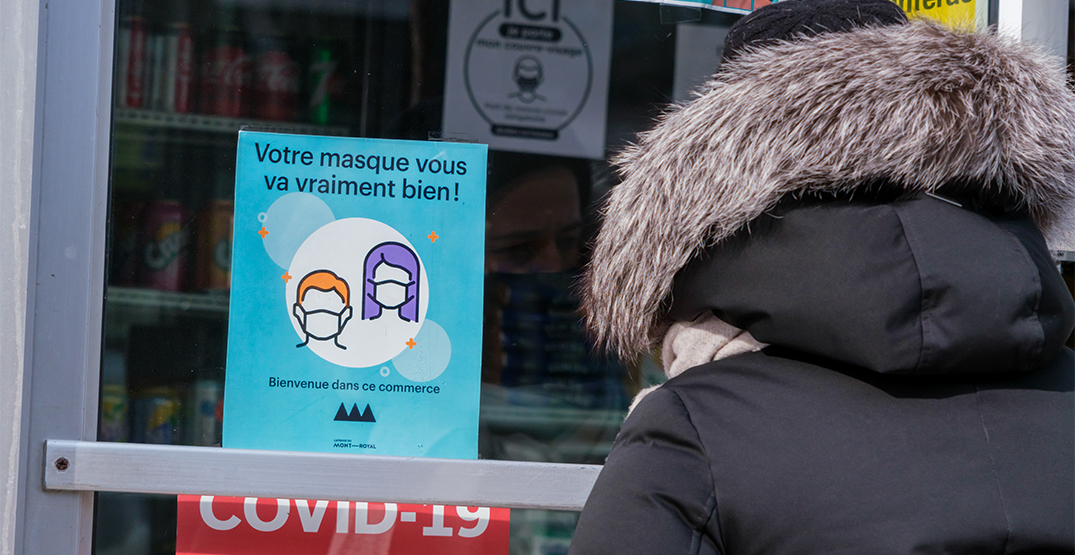One year at home: The status of every province's battle with COVID-19

We’ve officially reached the one-year anniversary of the week everything changed for many Canadians.
Justin Trudeau told citizens abroad to come home as soon as possible just before Canada announced its two-week quarantine requirement. Schools sent students home fearing virus outbreaks, and offices told employees to work remotely.
Most businesses shut their doors, and Canadians with vacation plans scrambled to cancel them.
We’d been watching China go into lockdown and then Europe, reading headlines of overloaded hospitals and skyrocketing infection rates. For a while many people thought COVID-19 would peter out overseas. But the true force of the pandemic had just arrived at our door.
In the past year our in-person social circles have dwindled while we got used to new phenomenons such as Zoom happy hours (and Zoom fatigue), household bubbles, and physical distancing.
We’re still in the thick of the pandemic, although hope is on the horizon as more frontline workers and older Canadians get offered the vaccine.
Here’s where each province is at:
British Columbia

Cyclist in downtown Vancouver during COVID-19. (Shutterstock)
Canada’s westernmost province started out strong, and Provincial Health Officer Dr. Bonnie Henry won international praise for her pandemic response.
But the second wave hit BC hard, and some worried early optimism was premature.
But BC never went back to a lockdown as strict as the first one. Restaurants have been allowed to host in-person dining since May 2020, and Henry has consistently encouraged residents to get outside for exercise with their household bubbles.
Social gatherings with people outside one’s household have been forbidden since November, and so has recreational travel. Henry initially asked British Columbians to accept these stricter restrictions for two weeks, but they’ve been extended for nearly five months and are now in place indefinitely.
BC’s daily cases have held steady around 500 new infections per day since mid-January, and even though this plateau isn’t the decline Henry would prefer, she believes that we’ll see “a post-pandemic world by this summer” as more people are vaccinated.
Alberta

A nurse in Calgary prepares a dose of COVID-19 vaccine on December 15, 2020. (Alberta Newsroom/Flickr)
Alberta’s COVID-19 infections were accelerating going into the Christmas season, prompting health officials to impose stricter restrictions on gatherings and business.
But after that, Alberta avoided the post-holiday infection boom that hit some other provinces. Active infections and hospitalizations have steadily come down since December, paving the way for Alberta to reduce more restrictions, which it did most recently on March 8.
Indoor gatherings are still prohibited, but rules are relaxing around indoor dining, retail, and fitness activities. Alberta has been seeing new daily case numbers in the 200 to 400 range recently, and variants of concern are circulating in the community.
Saskatchewan
Saskatchewan is allowing residents to expand their household bubbles to include 10 people this week. On Tuesday, the province reported 113 new COVID-19 cases and confirmed 35 new variant cases.
Manitoba
Everyone entering the province of Manitoba must self-isolate for 14 days. On Tuesday, the province reported 66 new cases, including 13 that were variants of concern.
- See also:
Ontario

Camillo Clauser/Shutterstock
Canada’s most populous province was home to the country’s first-ever COVID-19 case, and it saw worryingly high daily case counts consistently above 1,000 in the first wave and some daily case counts surged past 3,000 in the second wave.
The accelerating case counts around Christmas prompted Premier Doug Ford to issue a stay-at-home order and second lockdown. Those harsh restrictions gradually lifted in the province’s rural zones, and Toronto and Peel were finally given the go-ahead to start opening back up on Monday.
New daily cases in Ontario have been hovering just above 1,000 per day recently.
Quebec

Marc Bruxelle/Shutterstock
Montreal emerged as Canada’s hotspot for COVID-19 early in the pandemic as the virus decimated the city’s nursing homes.
Quebec was reporting more than 1,000 cases per day during the first wave and quickly reached that territory again in the second wave. Since Premier Francois Legault imposed harsh restrictions including a mandatory curfew, cases have since come down.
On Tuesday, Quebec saw 650 new cases.
Atlantic Provinces
New Brunswick, Nova Scotia, Prince Edward Island, and Newfoundland and Labrador set up the Atlantic Bubble in July 2020 that allowed residents of the region to move freely between the four provinces.
The bubble was scrapped in November as cases increased, but Maritime leaders are now discussing whether to re-establish the bubble for spring. Newfoundland and Labrador could join as well, although a decision has not yet been made.
New daily COVID-19 cases are in the single digits for all four provinces.
Territories
For a long time, Nunavut was one of the only regions in the world without a COVID-19 case. Its first infection was discovered on November 6, 2020. More infections were documented over the winter, many in the community of Arviat.
COVID-19 spreading to Nunavut was concerning because medical services are few and far between in the territory.
This week some restrictions are loosening in Arviat, which has been in lockdown for more than 100 days. On Tuesday there were 23 active COVID-19 cases in Nunavut.
There is only one active COVID-19 case in the Northwest Territories, but there are still travel restrictions preventing non-residents from entering.
Yukon has no active COVID-19 cases at the moment, and anyone who comes into the territory must self-isolate for 14 days.
A BC couple recently gained notoriety for flying to Yukon to skip the queue for a COVID-19 vaccine. They’ve been charged and are set to appear in Whitehorse court in May.

